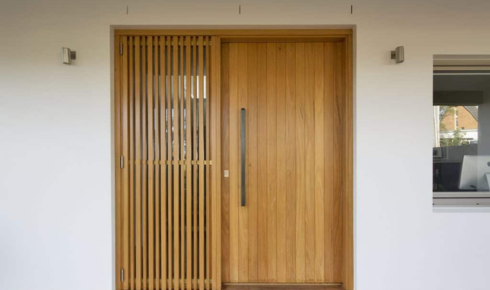There’s something about wood that never lets go of you. Even in an age of glass towers and sleek steel interiors, timber sneaks its way back into our homes. Maybe it’s the way it carries warmth, or perhaps it’s because wood feels human—aged, imperfect, alive in ways that concrete or plastic will never manage. I’ve walked through houses where the architecture was flawless, sharp, modern, almost futuristic… yet it was the single timber door or the exposed beam that made the space feel grounded.
The quiet artistry of making things last
One of the things that always amazes me is how timber is worked into form. It’s not just cutting planks and hammering nails. The real beauty comes from the way joints, edges, and finishes are handled. There’s a whole world of tradition behind it—carpenters and joiners who’ve spent decades learning to read grain patterns, to know which cuts will warp and which will hold steady. That level of attention makes me think of cooking passed down through generations. Anyone can fry an egg, but a recipe from your grandmother tastes like home because of the care layered into it.
It’s the same with Timber Joinery—a craft where patience meets precision. The joints aren’t just functional; they’re a quiet nod to centuries of skill, where strength and beauty intertwine.
Doors that tell a story before you even step inside
The front door has always fascinated me. It’s more than a practical thing you shove open after work. It’s a handshake, a first impression, sometimes even a memory keeper. Have you ever run your hand across an old timber door and felt the grooves, the softened edges from years of use? That’s a story in itself.
When you choose Solid Timber Doors, you’re not just buying something heavy and durable (though they are both). You’re choosing permanence. These doors age with you. They get nicked by grocery bags, polished by countless knocks, darkened by the sun over decades. And each mark feels earned, not like damage, but like history. A plastic door can’t do that—it just chips or cracks and heads for the landfill.
Windows that frame more than just a view
If doors are the handshake, windows are the eyes. They frame how we see the outside world, and they quietly shape the light that enters our lives. Timber windows have a way of softening everything. The frames add a gentle warmth that makes sunlight seem richer and shadows less cold. You notice it most on late afternoons, when the sun dips low and the timber edges glow softly, almost like candlelight.
There’s also a tactile pleasure to timber windows—the way the frame feels under your hand as you push them open, or how they give off a faint woody scent when warmed by the sun. It’s subtle, but it’s there, and it makes a difference.
Not maintenance-free, but maybe that’s the point
Of course, wood isn’t perfect. It swells, it shrinks, it sometimes needs sanding or sealing. But maybe that’s part of the charm. When you care for timber, it responds. It’s not like plastic or aluminum, which stay indifferent until they suddenly break or peel. Wood rewards patience. Every bit of maintenance becomes an act of preservation, almost like tending a garden.
Think of it like this: the things we love most often need attention. A leather jacket that needs polishing. A cast-iron pan that needs seasoning. Relationships, too. Timber is the same—it thrives when we invest a little time in it.
A greener choice that feels more honest
We can’t really talk about timber without mentioning sustainability. While other building materials guzzle energy to produce and create mountains of waste at the end of their lives, timber is renewable when harvested responsibly. It’s part of a cycle. A tree grows, it’s crafted into something useful, and another is planted.
And the carbon story? Timber literally locks it away. Every timber beam or door is storing carbon that would otherwise be floating in our atmosphere. In that sense, choosing timber is more than an aesthetic decision—it’s a small environmental one too.
Living with timber is about more than looks
I’ve always felt that timber adds an emotional layer to a home. It doesn’t stay static. It creaks a little in the cold, softens in the sun, deepens in color as the years roll by. These aren’t flaws; they’re personality traits.
That’s why people form connections with timber elements in their homes. They remember the squeaky floorboard by the bedroom, or the scratch on the window frame from when the dog got too excited. These details add texture to life. A home full of flawless, unchanging surfaces feels sterile, like living inside a showroom. Timber ensures your home feels lived in—and isn’t that the point?
Old traditions in modern spaces
What I love most is how adaptable timber is. Some architects use it boldly—great beams stretching across vaulted ceilings, or massive doors that feel almost medieval. Others use it with restraint: a single wooden window frame in a minimalist concrete house, a countertop that breaks up a sea of marble. Timber has a way of fitting into any style without losing its soul.
It’s a bridge between past and present. Old farmhouses used it out of necessity, modern designers use it for warmth, and in both contexts, it just works.
A closing reflection
If I had to sum it up, I’d say timber isn’t just material. It’s memory, it’s craft, it’s a touch of nature woven into our homes. Whether it’s a sturdy door that’s stood for decades or a carefully joined frame that holds everything steady, wood carries meaning.
We live in a time when speed and convenience dominate, where prefabricated and disposable things fill our lives. But timber resists that pace. It slows us down, reminds us that good things take time, and whispers—through its knots and grains—that imperfection can be beautiful.
And maybe that’s why, no matter how many trends swirl past, wood never truly goes out of style. It’s too real, too grounded, too connected to who we are to ever disappear.

